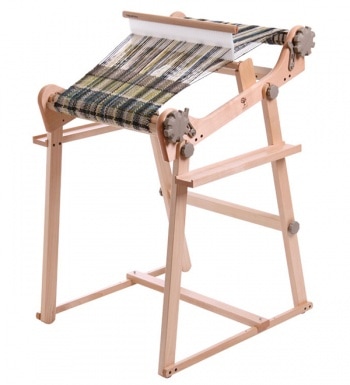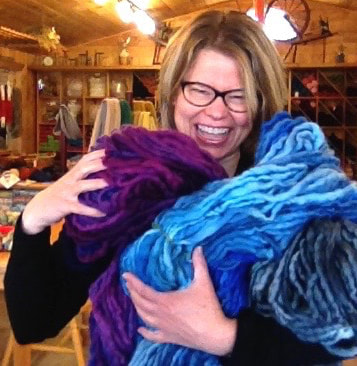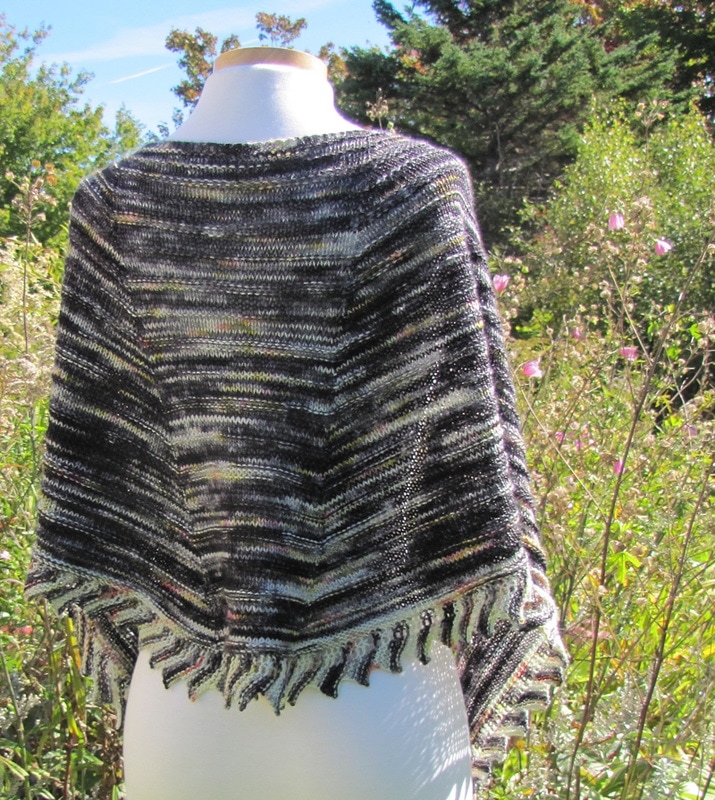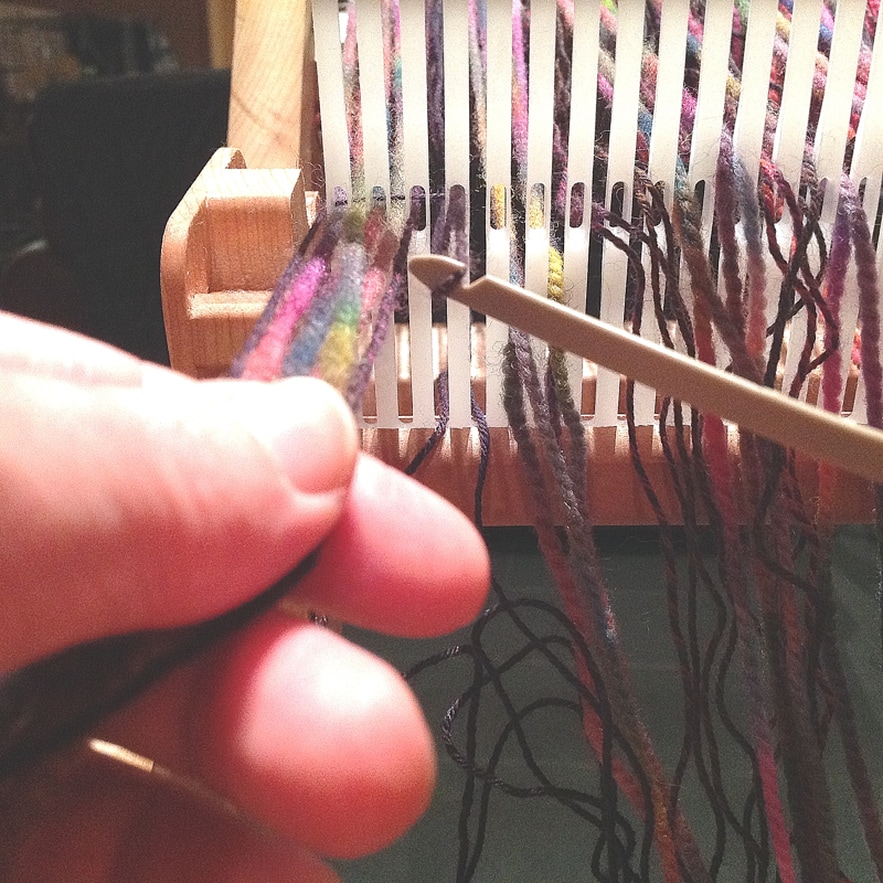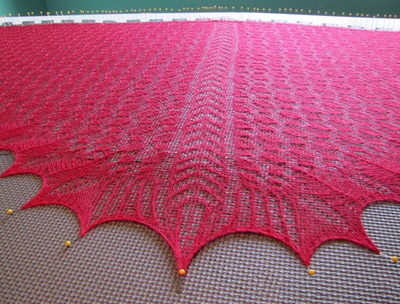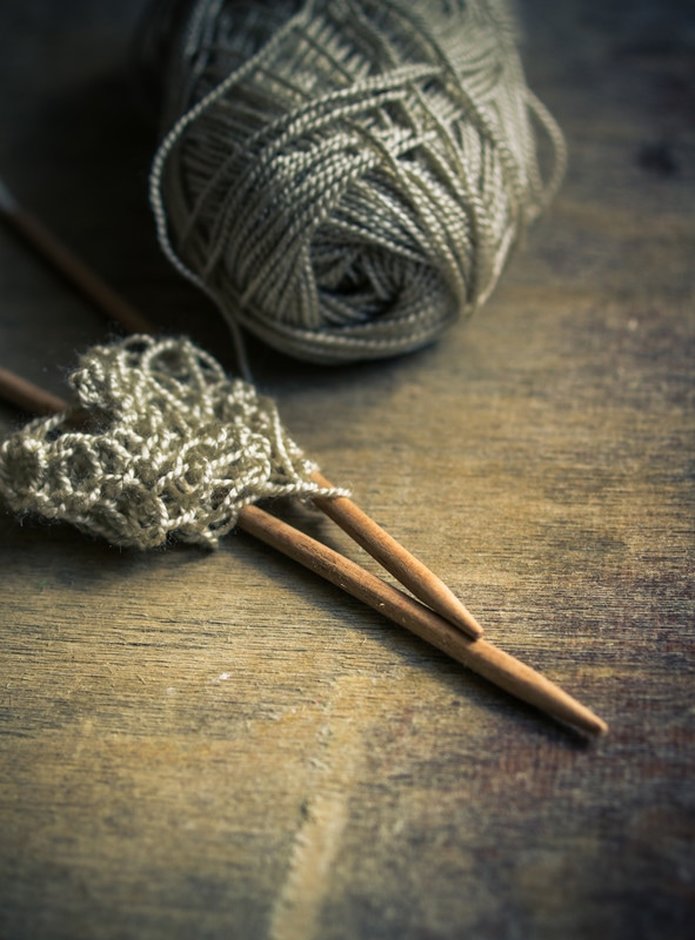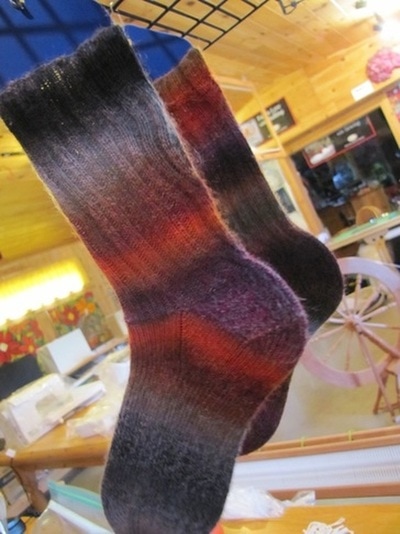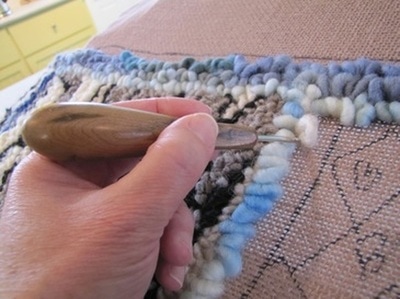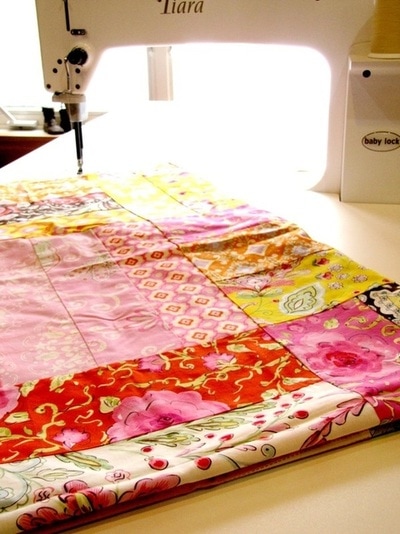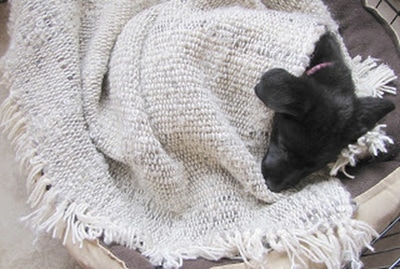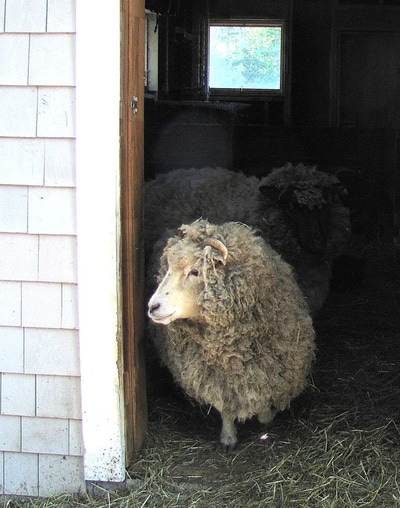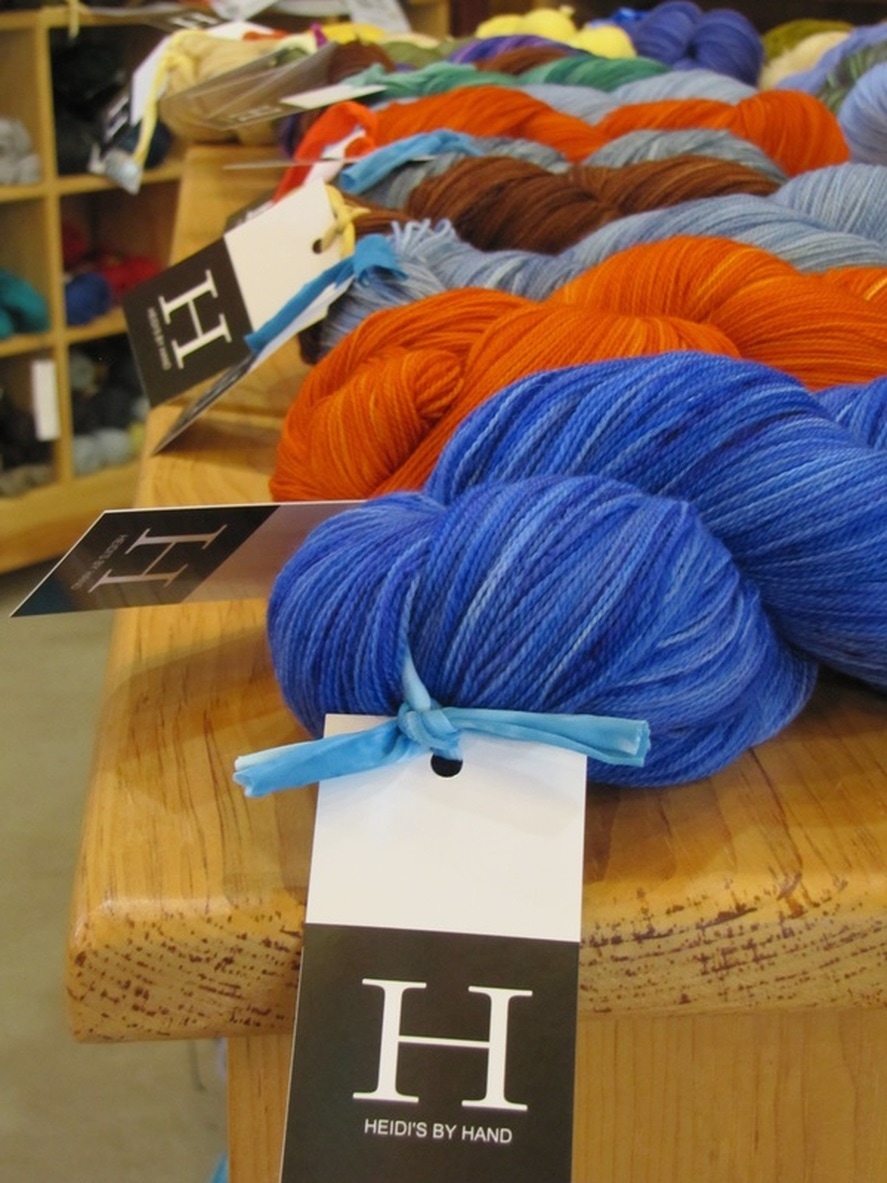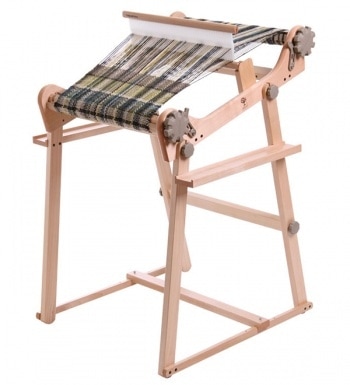|
We continue to received a wealth of really great questions regarding Ashford Rigid Heddle and Knitters looms. Today's post highlights a number of FAQ's regarding the purchase of a new loom.
My personal answers are attached. They reflect my own experience as a Rigid Heddle mega-fan and an Ashford retailer over the past 20 years. The opinions of others may vary. Where do I start in choosing a loom size? In terms of choosing a loom width, the smallest looms 10"-12” are perfect for scarves, small accessories and sampling, 16” will also provide enough width for tableware. A 20” loom is wide enough for most shawls, 24” provides the cloth width required for most sewing patterns 32” will, of course do all of this as well as small blankets and floor mats. Rigid or folding (knitters loom)? In my opinion the rigid looms are a little sturdier. The folding looms are excellent and super-portable but of course there is a (small) compromise in that they have a little give or movement as you work. This does not affect your weaving project and doesn’t bother me at all when I use these looms though I think perhaps weavers who have lots of experience on large looms may find this a little distracting. In terms of space requirement the rigid looms will store under a bed or hanging on bicycle hooks although they are not quite as space efficient as knitters looms. All of the stands (for rigid and folding looms) can be taken apart simply by turning a set of knobs. They do not require a tool set after the initial assembly. Trying to decide between a 28” knitters loom and a 32” rigid heddle loom The only difference between these two is their size and folding capability. In terms of function they are equal. The stand set-up for the rigid Heddle vs Knitters loom is more substantial but not as travel friendly. Is a 32” rigid heddle too large for me? Our most popular sizes sold are the 20-24” models as both lend a good width for shawls. If you are feeling uncomfortable about not having the extra length, the 32” is not significantly more expensive. In terms of working on a 32” it is as simple to operate as the smaller models. The only thing that I would mention to you is that the 32” rigid heddle is a bit too large to work on without a frame. The idea is that smaller looms, say 16” or less can be worked against a table supported in your lap. At 20” some people prefer to use a stand and others weave without one. I would definitely suggest that looms 24” and up require a stand. Which additional reeds do you recommend? The heddle that comes with all Ashford rigid heddle and knitters looms is a 7.5 dpi, suitable for a standard worsted weight yarn (such as Briggs and Little). For lace weight shawls you may want a 15dpi heddle. A common cloth weight for dish towels etc used are 10 and 12.5 dpi heddles (sett with either a single or double strand). A super-bulky textured scarf will use a 5dpi heddle. What is a vari-dent reed? A vari-dent reed offers the ability to accommodate different sized yarns in small segments across the width of your reed. This allows you to dress the loom with a custom warp, meaning endless possibilities for cloth of your own design! Would a Rigid heddle loom make a good gift for my daughter? I absolutely love rigid heddle looms. I use them in the shop and have one at home as well. I think it’s a fantastic gift for anyone who like to work with fibre!
45 Comments
Kimberly Robertson
3/13/2017 04:17:18 pm
What did you mean when you said "the folding looms are excellent and super portable but of course there is a small compromise in that they have a little give or movement while you work"? In which way, are you referring to tension on the loom or the loom on a stand without the extra supports?
Reply
Miriam Kaufman
1/29/2020 12:13:28 pm
I know this is an old thread, but I thought I would jump in anyway. I have the 28" knitters' loom and like almost everything about it. However, the wobble is a problem. When I contacted Ashford, they basically said I must be doing something wrong. After a couple of attempts to mitigate this I hit on a solution. I used Sugru (a silicone putty that cures without heat) to build up the plastic L brackets that fit into the notch that holds the back beam up. I made them big enough to fit the triangular notch and now have no issues. (The wobbling was a big problem because it wasn't even, so my tension would be loose on one side only). Someone else I know with the 28" has strapped it together so it can't move.
Reply
Heidi
1/29/2020 04:57:10 pm
Great tip Miriam!
Miriam Kaufman
1/29/2020 05:06:29 pm
i accidentally unsubscribed, just subscribing again.
Francesca
11/4/2023 12:33:06 pm
This is a fantastic tip. I have some sugru and will try it, thank you. Ashford fobbed me off too.. on two separate occasions. I have the 20" Knitters' Loom and I bought the table stand first which helps but does not make a difference to the wobbling. Then I noticed that their newer stands had braces - which you can buy separately now - and those helped as well. But those darn clips keep loosening. It is a design flaw just as much as the original table stand was flawed.
Heidi
3/19/2017 08:21:08 am
Hi Kimberly,
Reply
5/17/2018 05:49:06 am
Hi
Reply
Judi Meissner
8/2/2018 11:17:09 am
I am currently working on a 12" Ashford Knitter's loom on a
Reply
Dagny Carolina Opsal
8/13/2018 01:45:30 am
I am not able to offer a reply, but I have the same problem- the reed falls over, driving me crazy, and tension is very hard to adjust on the Knitter's loom. I have a Sample It too, though I do struggle with good tension in general, it is a breeze to use compared to a Knitter's loom. Is there a trick to the Knitter's loom, with the folding, or something, that helps with tension and keeping the reed in place? I suppose the Knitter's loom must be a more advanced option, because I find it tricky. Sorry, but I could only leave a reply, not a comment, so I suppose this is not answering your question...
Reply
11/3/2018 09:03:44 am
Hi Dagny, 11/3/2018 08:05:18 am
Hi Judy,
Reply
Sarina
8/10/2018 12:47:57 pm
What does the 30/10 mean on the 7.5 reed?
Reply
11/3/2018 09:22:14 am
Hi Sarina,
Reply
Melanie Pound
11/3/2018 07:09:36 am
Great comments on here. If only I had found this site when I first started to weave. I went out & bought the largest of the knitters loom. I have subsequently sold it! I wasnt a fan tbh. I found it most irritating to use & the tension was most definetely compromised with the folding action. I found that if you started a piece of weaving then altered the turn knobs it would affect the piece of cloth you were working on. It was hard to warp up with the peg moving if you tensioned your warp at the beginning, most frustrating. I always need another person to help when I was warping also, this was because of tension problems if I tried to do it myself.
Reply
11/3/2018 09:29:33 am
Hi Melanie,
Reply
Ana
11/18/2018 06:54:05 am
I just purchased my first loom and I cannot wait to get it in the mail. My question is, what is the difference between the ashford weaving rigid heddle loom and ashford sampleit weaving loom? I purchased the sampleit 16", and I hope I made the right decision. Thank you!
Reply
Heidi Wulfraat
11/18/2018 09:54:15 am
Hi Ana,
Reply
Sue
12/9/2018 02:10:36 pm
I am thinking of purchasing the 32" RHL to use on my table (without the stand) what are the drawbacks of not having a stand?
Reply
Hi Sue,
Reply
George Spinner
7/28/2019 02:34:38 pm
Hello, Is it possible to use a boat shuttle with the Ashford Rigid Heddle Loom? If so are there any that definitely do?
Reply
Heidi Wulfraat
8/2/2019 09:34:34 am
Hi George,
Reply
Karil
9/10/2019 03:34:38 am
Hello Heidi, I am a Newbie and recently purchased the Ashford 70cm Knitters Loom. It is a perfect match for my needs, but I found that I wanted to do more sampling, and I also wanted to introduce my 6yr-old granddaughter to weaving, so half a year later, I purchased the Ashford 25cm Samplet Loom. Another excellent decision!
Reply
Heidi
9/11/2019 01:05:47 pm
Hi Karil,
Reply
Ellen
1/15/2020 02:27:53 pm
I want to buy a loom, but wonder what is the main difference between a rigid heddle and a kintter's loom. Is it mainly that the knitter's is slightly less -- sturdy, or moves less? (I know there's another word that I mean, but I'm at that age where it takes a while to find some words....)
Reply
Heidi Wulfraat
1/15/2020 04:39:42 pm
Hi Ellen,
Reply
Bana
1/25/2020 08:50:08 am
Hi, I'd like to know what the difference is between the Rigid Heddle Loom and the SampleIt Loom from Ashford. Other than the limited width in size for the SampleIt I can't really tell. I want to buy my first loom but am perplexed by a lack of clarity on the difference on any website. Also, I notice that the Rigid Heddle Loom has the ability to be a warping board on the bottom of the Loom.. Is this is all the sizes? And does the SampleIt loom include this feature? I primarily want to make scarves and smaller pieces of fabric at this stage perhaps moving up to larger fabrics if I gain enough experience etc. Thanks
Reply
Heidi
1/29/2020 05:13:47 pm
Hi Bana, Great questions:)
Reply
Julie
4/24/2020 05:34:21 pm
I was wondering if you could point me in the right direction with which Ashford Rigid Heddle Loom width I would need to make throws and baby blankets and how difficult is it to use d
Reply
Heidi Wulfraat
4/30/2020 11:00:59 am
Hi Julie, for throws and baby blankets I would suggest a 32' Rigid Heddle. As you've suggested a double heddle can be used to double the width of your finished piece. This process is not at all difficult but will require you to have become familiar with the process of plain weave.
Reply
Jean Formo
3/2/2021 10:56:54 am
Can I direct warp my 32" Ashford rigid huddle loom while it is attached to its floor stand?
Reply
3/2/2021 12:49:37 pm
Hi Jean, Yes you can warp the loom while it is on it’s stand. It requires you to anchor the stand so that it cannot slide forward along the floor while you are warping. For example, can tie the stand to a heavy piece of furniture before you begin warping.
Reply
Marsha Abrams
3/20/2021 06:30:15 pm
Is it possible to put two warp threads in each slot/slit of a 7.5 reed (on a Sampleit loom) to effectively turn the dpi into 15?
Reply
Heidi Wulfraat
3/22/2021 05:40:55 pm
Hi Marsha,
Reply
Marsha
4/20/2021 06:19:39 am
Thanks for your answer about doubling the warp threads with a 7.5 dent.
Hi Marsha,
Reply
Marsha
4/20/2021 07:27:40 am
So helpful. I was hoping to weave multiple scarves from one warp (to give to shelters), and your idea of emptying the front roller between projects should make this much easier, Thanks!
Reply
Terri
7/23/2021 04:09:05 pm
Hi. I m a beginner. I can’t decide between the 16” RH and the 16” Sampleit. I want to mostly makes handbags and shawls (I’m 5’0”). I might want to do a lot of pickup for the bags. Would it be worth it to get the RH for the roller? Which loom is better? Thanks.
Reply
Hi Terri,
Reply
Mary Jo
9/4/2021 06:22:56 am
Sorry I couldn't figure out how to post a wuestion, only a reply.
Reply
Hi Mary Jo,
Reply
Rosie
6/8/2022 06:27:05 am
Hi, So glad to have found this site for support. I have the 20 inch knitters loom and when I try and weave sitting and bring the loom to the edge of the table my heddle does the same as Mary Jo's (previous comment). I have tried everything but the heddle just flops to the bottom when I am seated. So now I can only weave with the loom on the table and me standing. This is the only way I can use the heddle in the down position. It's very disappointing.
Hi Rosie,
Reply
Rosie
6/8/2022 02:53:33 pm
Thanks Heidi for your response. I understand the tension issue. One thing you said which I think captures my problem -
Reply
Jean Formo
6/8/2022 08:19:31 am
Thanks for the tension tip. Sometimes my heddle is a bit a too hard to move up or down. It is probably a matter of too much tension. Things have to be just right, it seems.
Reply
Your comment will be posted after it is approved.
Leave a Reply. |
WELCOME
Everyday I try to find a little something that makes life interesting. A good book, a wagging dog, a cool breeze, tea with a friend. Here are my field notes about making, discovering, and enjoying a simple, slow, handmade life. Thanks so much for visiting. I appreciate your spending time with me. xo Heidi 
STITCHER, MAKER, DREAMER, BOOK REVIEWS summer 2016 Archives
July 2020
|

